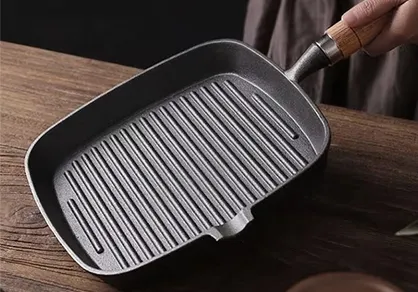
dutch oven enamel coming off
Understanding Dutch Oven Enamel Coming Off Causes, Effects, and Solutions
Dutch ovens are cherished kitchen assets, celebrated for their versatility, durability, and ability to retain heat. These heavy, cast-iron pots, often coated with a colorful enamel finish, are the workhorses of numerous kitchens, capable of slow cooking, braising, baking, and even frying. However, one issue that can arise with these beloved appliances is the enamel beginning to come off. This article will delve into the causes, effects, and potential solutions to this problem.
Causes of Enamel Chipping
Enamel chipping can occur due to several factors. One prominent cause is temperature shock. Dutch ovens are designed to withstand high temperatures; however, sudden changes in temperature—such as placing a cold pot in a hot oven or filling a hot pot with cold liquid—can stress the enamel coating and lead to cracking or chipping.
Another crucial factor is the use of metal utensils. While some enamel coatings are more durable than others, using metal spatulas or whisks can scratch the surface and compromise the integrity of the enamel. Over time, these small scratches can exacerbate into larger chips, ultimately leading to peeling or flaking.
Improper cleaning methods can also contribute to enamel degradation. Abrasive scrubbers and harsh chemical cleaners can wear down the enamel over time. It is essential to treat these pots gently to maintain their appearance and functionality.
Effects of Enamel Damage
When enamel starts coming off, it can have both aesthetic and functional repercussions. The most immediate concern is the appearance of the Dutch oven; chipped enamel can make the pot look old and worn, detracting from its beauty. For many cooking enthusiasts, the visual appeal of kitchen tools is significant.
dutch oven enamel coming off

Functionally, while small chips may not pose an immediate danger, they can eventually lead to more serious problems. Once the enamel breaks away, the cast iron beneath can be exposed to moisture, which may lead to rust. Additionally, food can become lodged in the cracks, making the pot more challenging to clean and potentially contaminating meals.
Solutions and Prevention
Fortunately, there are preventative measures and solutions to address enamel chipping. Start by using wooden or silicone utensils when cooking with your Dutch oven. These materials protect the enamel from scratches and help maintain its integrity.
To prevent temperature shock, it’s wise to avoid extreme changes in heat. When cooking, allow the pot to adjust gradually to temperature changes; for instance, let your Dutch oven come to room temperature before placing it directly into a hot oven.
Cleaning requires extra care; opt for gentle sponges or cloths that won't scratch the enamel surface. If your Dutch oven does sustain some chipping, assess the extent of the damage. Minor chips may not affect performance, but excessive chipping can compromise the pot.
In the case of extensive damage, consider contacting the manufacturer. Some brands offer repair services, or they may provide guidance on replacing severely damaged cookware. While enamel damage can be disheartening, taking these steps can help extend the life of your beloved Dutch oven and ensure it continues to serve you well for many meals to come.
In conclusion, while enamel chipping on Dutch ovens can be a common issue, understanding the causes helps in mitigating the risk. With proper usage, care, and maintenance, you can preserve your Dutch oven's beauty and functionality for years of enjoyable cooking experiences.
-
Cast Iron Cookware- Baixiang County Zhongda Machinery Manufacturing Co., Ltd.|Non-stick, Heat RetentionNewsAug.07,2025
-
Best Cast Iron Dutch Oven Pot: Versatile & Durable CookwareNewsAug.07,2025
-
Cast Iron Cookware Pancake Crepe Pan With Wooden Handle-Baixiang County Zhongda Machinery Manufacturing Co., Ltd.|Nonstick Surface&Even Heat DistributionNewsAug.07,2025
-
High Quality Kitchen Durable Black Round Cast Iron Cookware-Baixiang County Zhongda Machinery Manufacturing Co., Ltd.|Nonstick, Heat ResistanceNewsAug.07,2025
-
Non-Stick Cast Iron Cookware-Baixiang Zhongda|Durable&Heat RetentionNewsAug.06,2025
-
High Quality Kitchen Durable Black Round Cast Iron Cookware Pancake Crepe Pan With Wooden Handle-Baixiang County Zhongda Machinery Manufacturing Co., Ltd.NewsAug.06,2025


